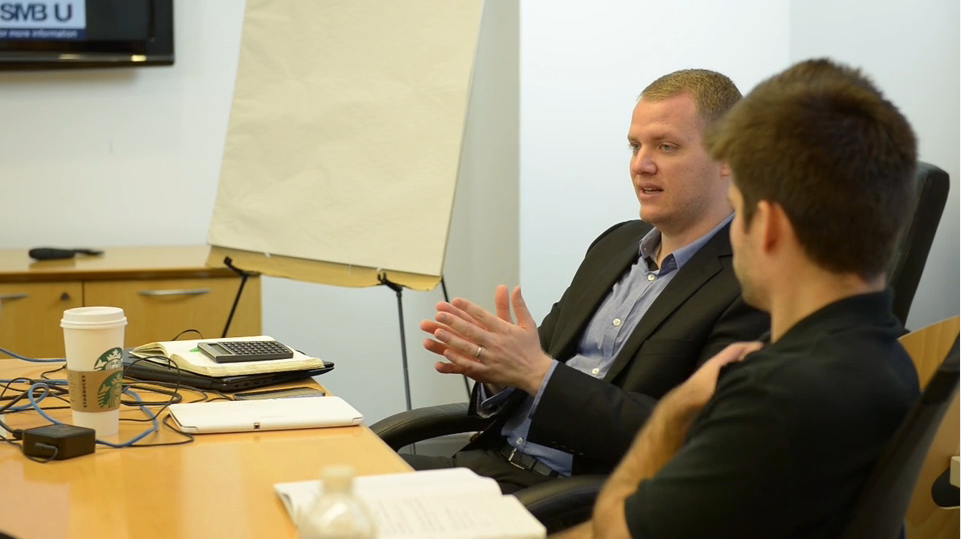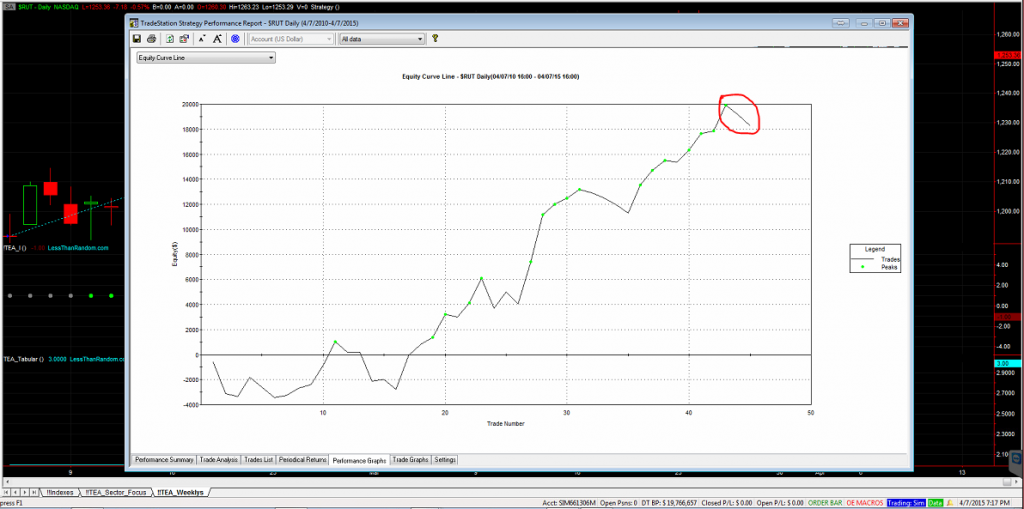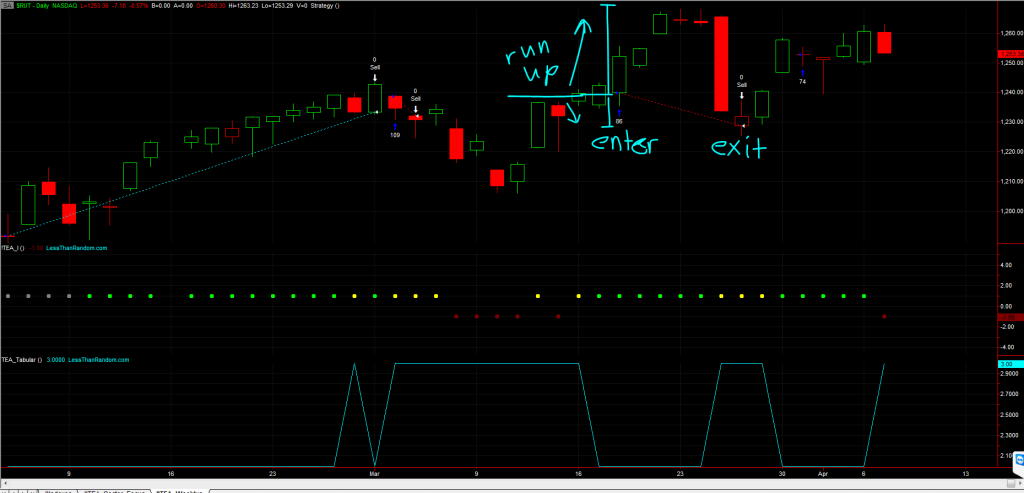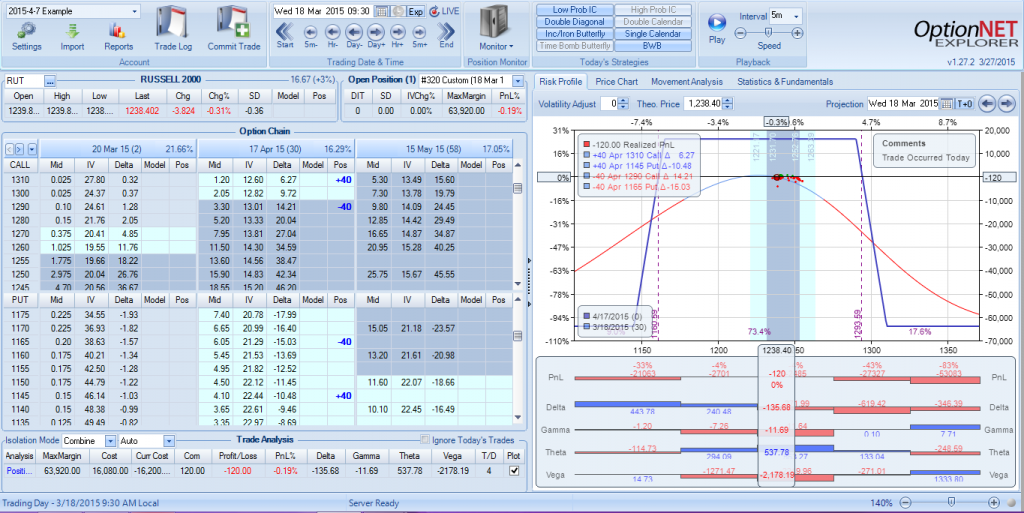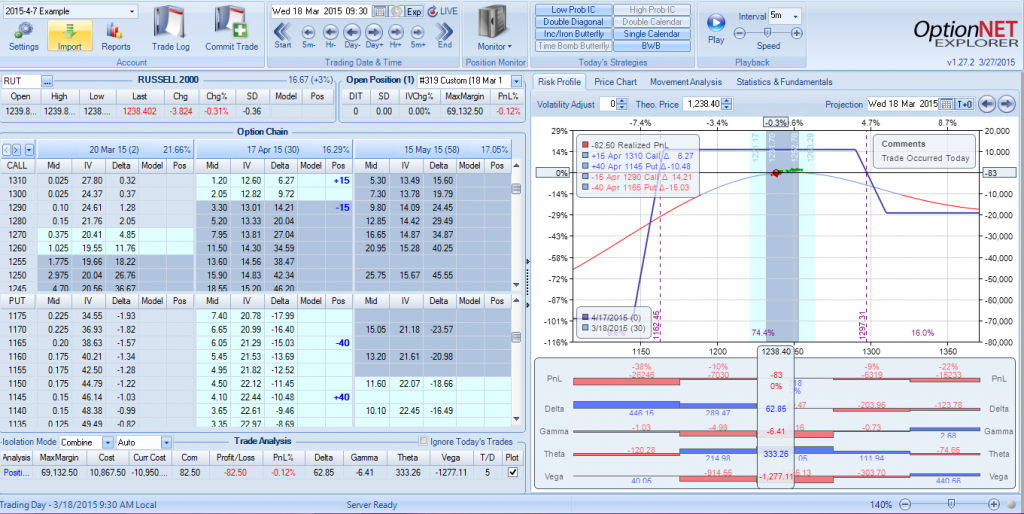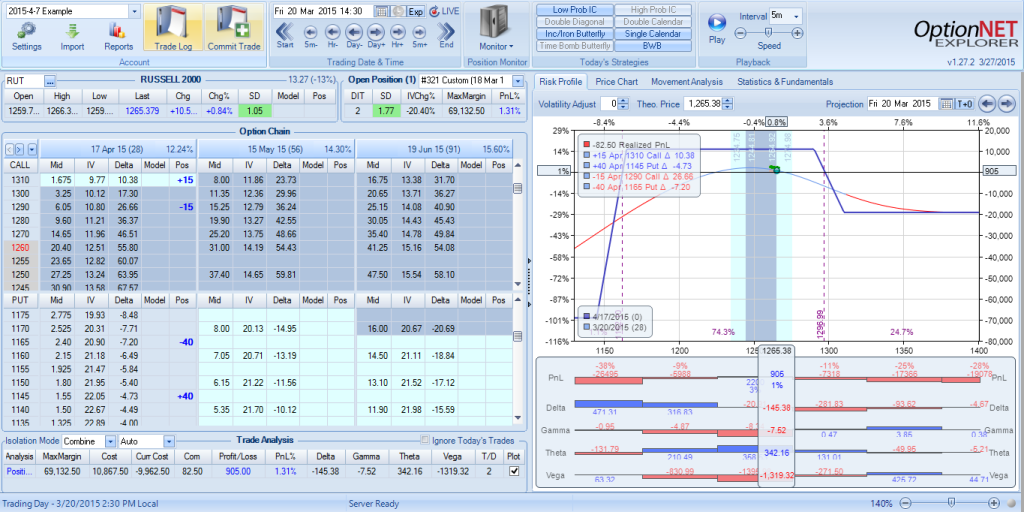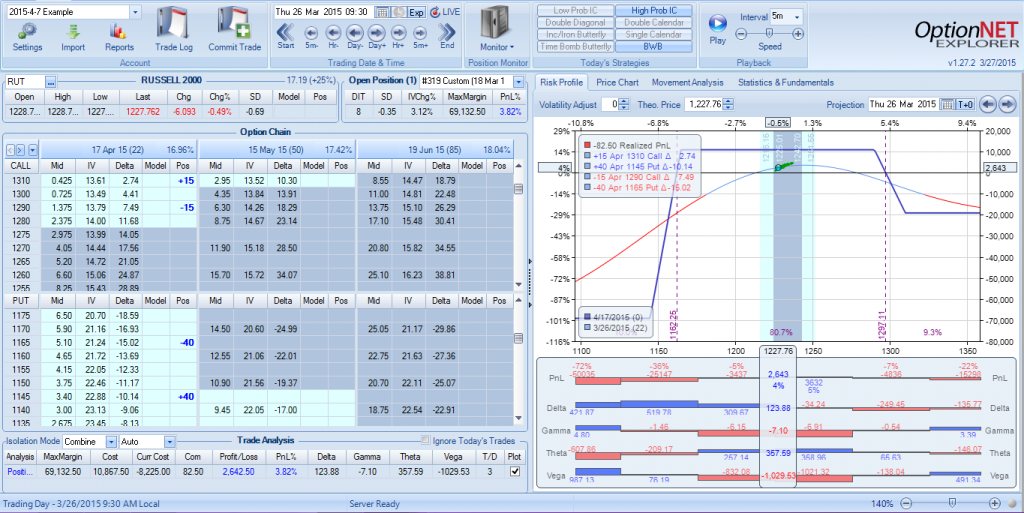Here is a case study in accumulating as many edges as possible to increase your risk adjusted returns. In the past, I have shared that most developing traders start by looking for the fastest way to make bigger profits.
However in systems development we look for the highest risk adjusted returns. In this example trade, we are going to combine two theoretical edges and look for both to add value. In the example, only one of the edges is going to work for us.
Edge #1 – Time Decay of Options
An Iron Condor is a simple options trade that benefits most in the underlying instrument stays in a tight range. The risk is if a strong trend develops and moves outside of the range of our options profile.
Edge #2 – A Valid Momentum Signal
The TEA indicator is a robust trend/momentum signal that helps identify early shifts in the direction of the market without overreacting to short term noise.
Here is a simulated P/L of the TEA indicator on the $RUT (Russel 2000 Index). The red circle represents the trade we are going to analyze. As you can see, this is a losing trade. So, now that I’ve given away which component of the system is going to fail in our sample… let’s move on.
(Trades are hypothetical; simulated using historic market data)
Here is a chart of the market during this trade. As you can see, the signal identified the early part of the move, but the correction was too quick to get us out with a profitable signal. NOTE: I said the Signal wasn’t profitable — but we are going to see how the Trade works out soon enough. The red dashed line represents the entry and exit points.
The TEA indicator are the green, yellow, and red dots. We enter after the first green dot closed, and exited after the first yellow dot closed.
If we traded an Iron Condor with no trend defense from the signal, the trade would have looked like this.
Entry: Starting at P/L of 0% — We have an equal amount of spreads on the call side and put side of the market.
Then at the run up point we have a P/L draw down of -7.54% — and we are looking at a very steep curve with a lot of risk if the market continues to run up.
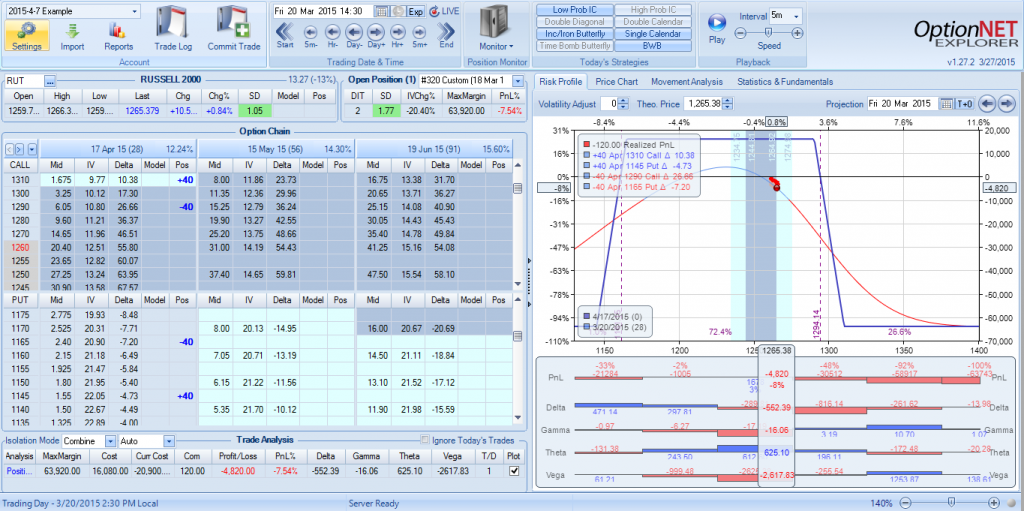
At the exit point of the signal, the trade ends at a P/L of +10.14% — Whew!
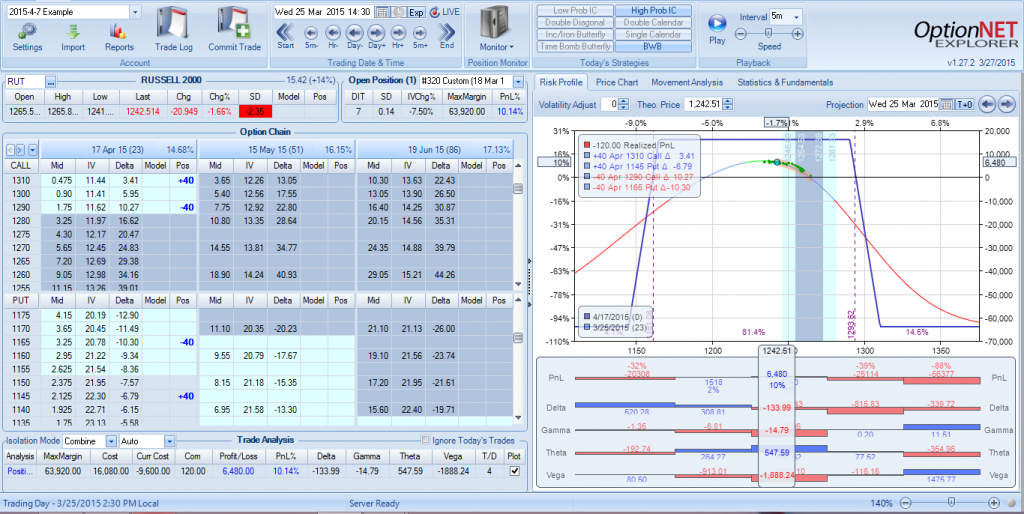
Now, here’s a Ratio Iron Condor where we reduce our risk in the direction of the identified trend/momentum that the TEA indicator is representing.
At the open of the trade, you can see the reduced risk on the call side of the market. Starting P/L is 0%
At the top of the run up, the P/L is actually at a positive 1.31%
The options system being shown here is approaching an adjustment point to allow for the market to move up even further without threatening the trade. If the market were to continue up rather than mean reverting, the original “balanced” iron condor would have created a big draw down.
So, our ratio trade is respecting the trend, it’s positioned well for retracement, and benefiting from time decay.
Then we end the trade below our initial entry point… but with a profit of 3.8%.
This is an example of a trade that made less… but it’s the trade I’d pick 100% of the time. It had No draw down and ended with a profit on a bad directional signal.
Do you have questions about this trade, the TEA indicator, or combining multiple edges to increase your risk adjusted returns?
-Andrew Falde
SMB Training
Options Risk Disclaimer. No relevant positions.

